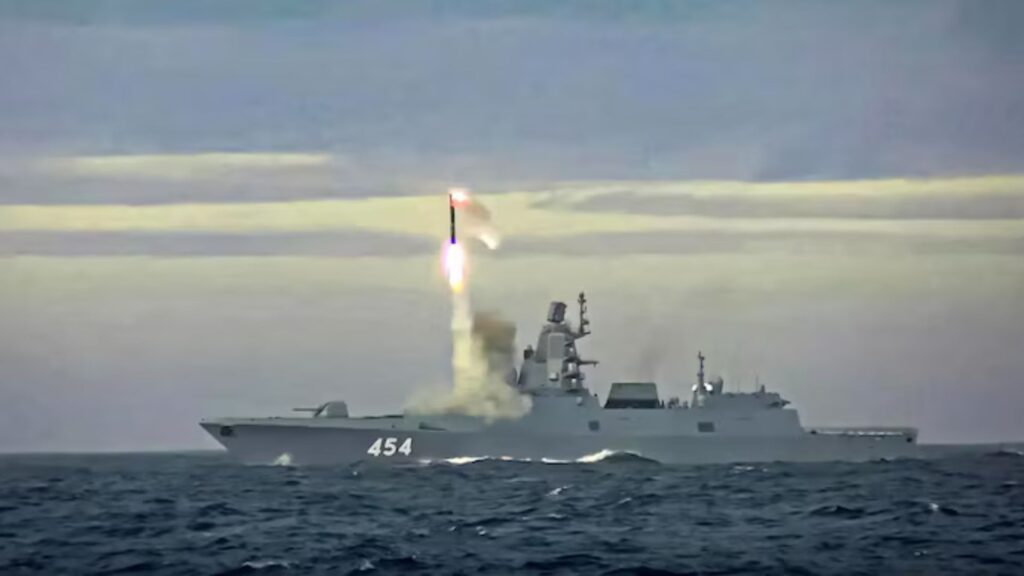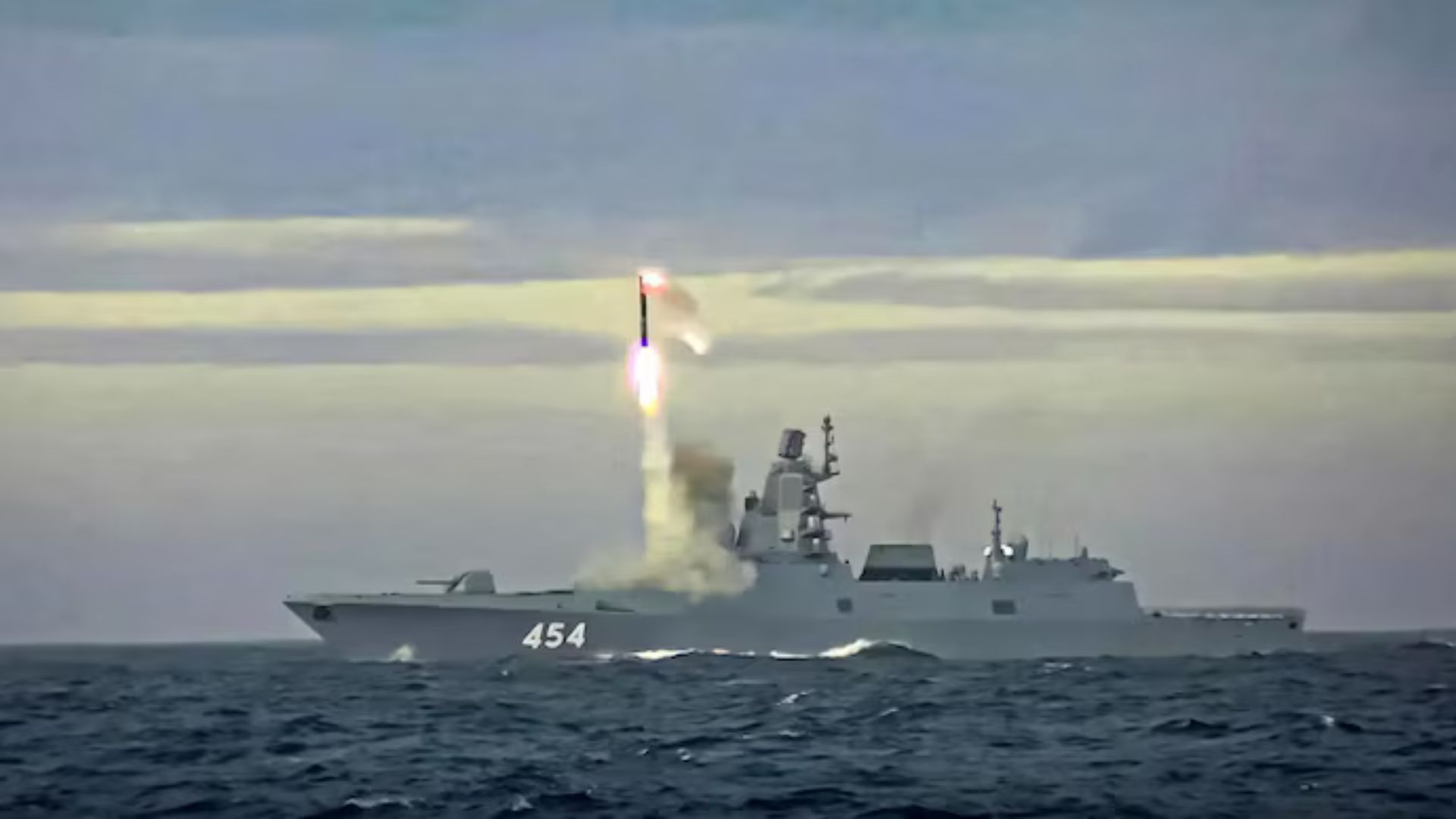
The Russian Northern Fleet’s Admiral Golovko frigate successfully launched a Zircon hypersonic cruise missile at a designated target in the Barents Sea on September 14, with the Russian Defense Ministry confirming a direct hit based on real-time monitoring data (Reuters). Video released by the ministry showed the missile’s vertical launch followed by rapid acceleration toward the horizon, illustrating its capability to engage maritime targets with minimal warning.
The Zircon, or 3M22 Tsirkon, is capable of speeds up to Mach 9 and has a range exceeding 1,000 kilometers, making it one of Russia’s most advanced naval strike weapons. President Vladimir Putin has touted the missile’s unmatched striking power, underscoring its role in modernizing Russia’s sea-based deterrent forces (India Today).
MiG-31 Aircraft Deploy Kinzhal Missiles
Prior to the naval launch, Russian MiG-31K fighter jets conducted a four-hour patrol over neutral Barents Sea waters on September 13, armed with Kinzhal hypersonic ballistic missiles. These air-launched daggers can carry nuclear or conventional warheads over distances of up to 2,000 kilometers at speeds reaching Mach 10, enabling rapid, long-range strikes with minimal detection time (DevDiscourse).
The deployment transforms the MiG-31K into a mobile hypersonic missile battery, capable of launching precision strikes from extreme stand-off ranges. Russia has previously used Kinzhal missiles in its ongoing conflict in Ukraine, demonstrating their strategic value in both conventional and nuclear deterrence roles.
NATO Responds with Operation Eastern Sentry
In reaction to the Zapad 2025 exercises and recent drone incursions into Polish airspace, NATO launched Operation Eastern Sentry on September 12 to reinforce defenses along Europe’s eastern flank. The operation features French Rafale fighters, Danish F-16s, German Eurofighters, and a Danish anti-air warfare frigate, reflecting a robust multinational commitment to regional security (Reuters).
NATO Secretary-General Mark Rutte condemned Russia’s actions as “reckless and unacceptable,” emphasizing that the alliance would defend member airspace and maritime zones without hesitation. This marked the first direct NATO engagement with Russian targets since the 2022 invasion of Ukraine, highlighting escalating tensions in the high north.
Zapad 2025 Exercise Details
Running from September 12–16 across Belarus and western Russia, Zapad 2025 is a joint defensive exercise nominally designed to test coordination against hypothetical enemy attacks. Naval drills span both the Baltic and Barents Seas, while Belarusian officials indicate the inclusion of nuclear planning scenarios involving Russia’s experimental Oreshnik missile system (Reuters).
Poland responded by closing all Belarus crossings and deploying 40,000 troops along its borders with Belarus and Russia’s Kaliningrad region. Simultaneous NATO exercises like Iron Defender 2025 in Lithuania, Latvia, and Poland underscore the alliance’s preparedness and resolve amid Russia’s intensified military posturing.











